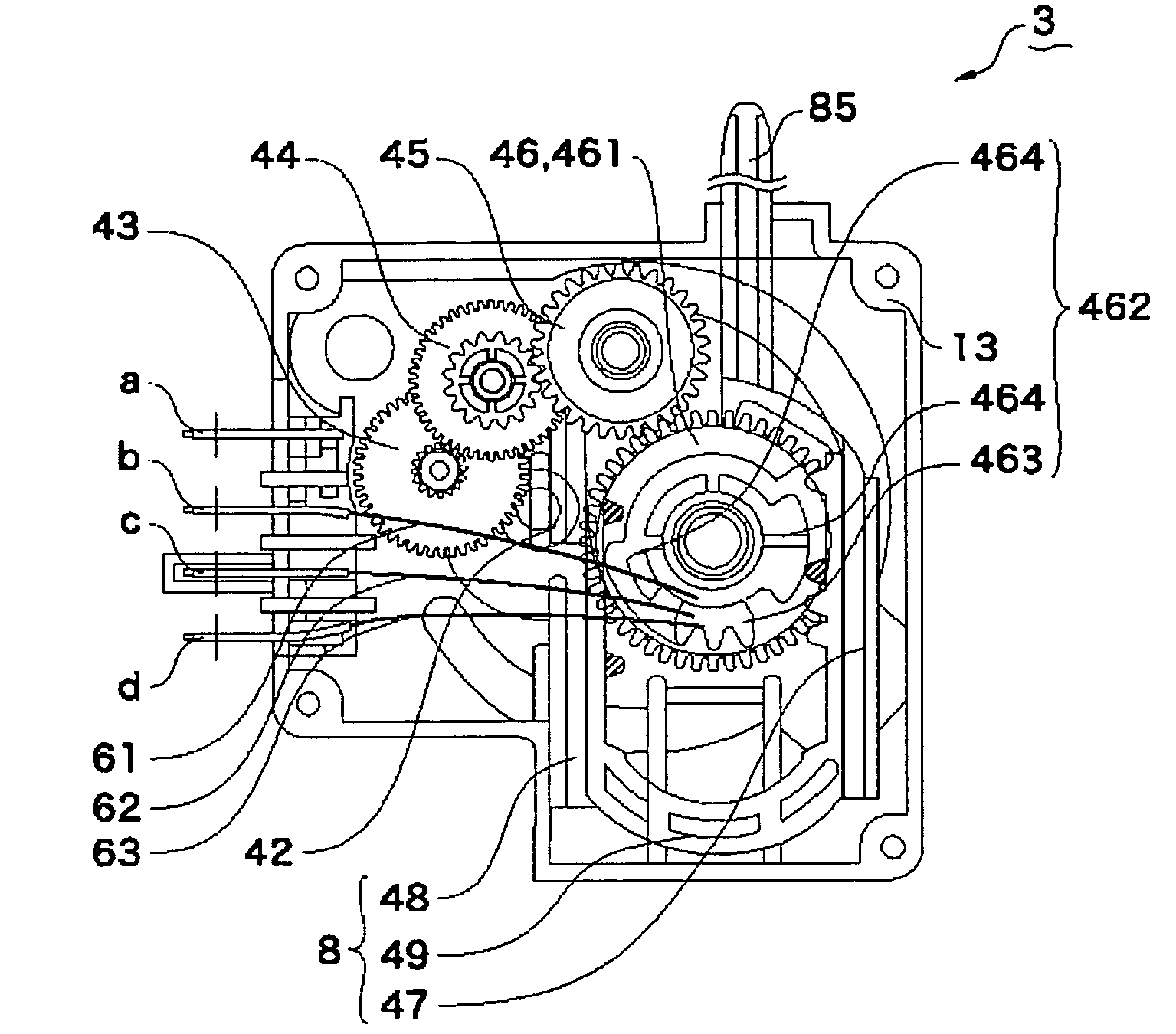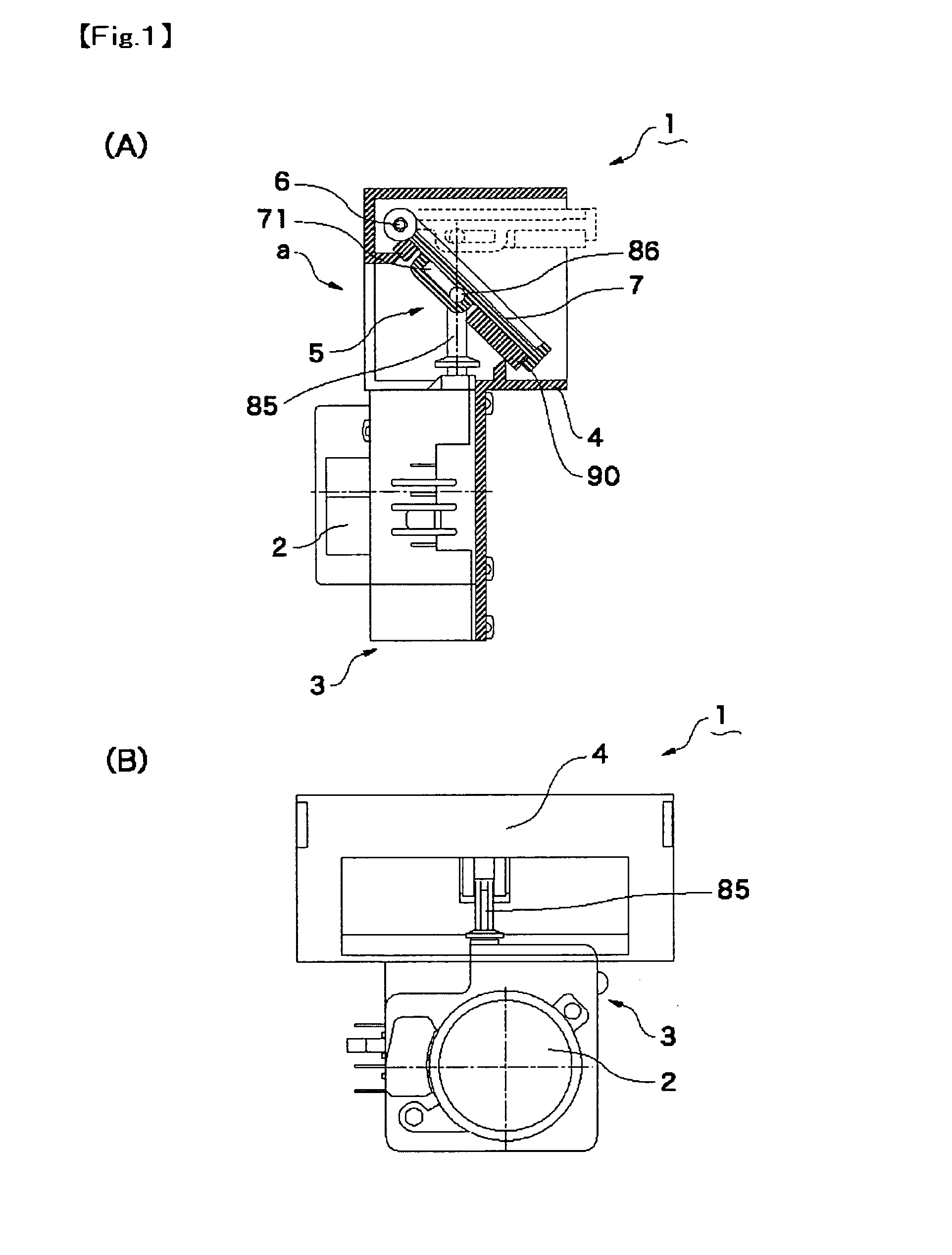Motor Actuator and Opening/Closing Device
a technology of motor actuator and opening/closing device, which is applied in the direction of lighting and heating apparatus, heating apparatus, and heating equipment, etc., can solve the problems of complicated structure of the control circuit for changing the rotating direction of the motor, and achieve the effect of reducing the size of the motor actuator, narrowing the operating space of the rack member, and simplifying the control circuit of the motor actuator
- Summary
- Abstract
- Description
- Claims
- Application Information
AI Technical Summary
Benefits of technology
Problems solved by technology
Method used
Image
Examples
Embodiment Construction
[0034]As a motor actuator to which the present invention is applied, an opening / closing device for causing a baffle (driven member) used in a refrigerator to perform opening or closing operation will be described below with reference to the accompanying drawings.
[0035](Entire Structure of Opening / Closing Device)
[0036]FIG. 1(A) is a partly sectional explanatory view showing an opening / closing device to which the present invention is applied and FIG. 1(B) is a rear view showing the opening / closing device which is viewed from the direction of “a” in FIG. 1(A). FIG. 2(A) is a plan view showing a geared motor which is used in the opening / closing device shown in FIG. 1 and FIG. 2(B) is a developed view showing a gear train of the geared motor. FIGS. 3(A), 3(B), 3(C), 3(D) and 3(E) are explanatory views for explaining the structure and operation of the opening / closing device shown in FIG. 1. The left side views show positional relationships between a cam member and contact pieces which are...
PUM
 Login to View More
Login to View More Abstract
Description
Claims
Application Information
 Login to View More
Login to View More - R&D
- Intellectual Property
- Life Sciences
- Materials
- Tech Scout
- Unparalleled Data Quality
- Higher Quality Content
- 60% Fewer Hallucinations
Browse by: Latest US Patents, China's latest patents, Technical Efficacy Thesaurus, Application Domain, Technology Topic, Popular Technical Reports.
© 2025 PatSnap. All rights reserved.Legal|Privacy policy|Modern Slavery Act Transparency Statement|Sitemap|About US| Contact US: help@patsnap.com



